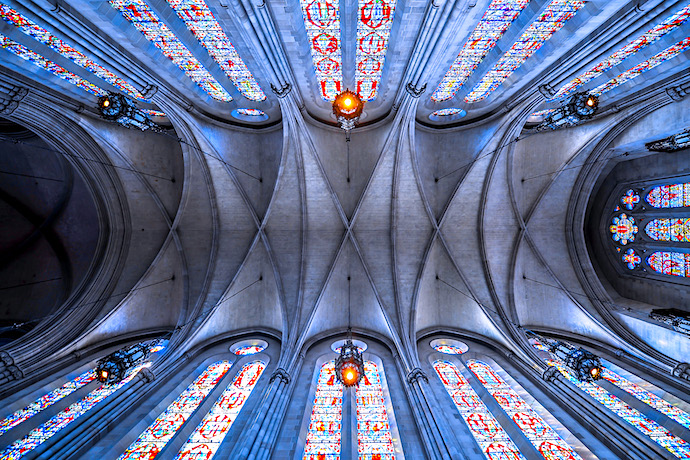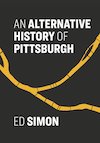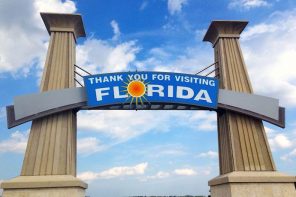Willa Cather is so associated with the Nebraska prairie’s expanse, depicted in novels like O Pioneers! and My Ántonia, that it’s disorienting to imagine her living in hilly industrial Pittsburgh at the turn of the century, and yet for a decade she made her home in Shadyside and the then-fashionable East Liberty neighborhood. Though a Virginian by birth and a Nebraskan by choice, in 1896 Cather moved to the Steel City to write for Home Monthly.
Supplementing her income by teaching high school English, Cather would publish her first fiction in Pittsburgh. No piece written during this time was more evocative of the then drab, crowded, dirty, and chaotic city than her perfect 1905 story “Paul’s Case.” Recounting the travails of the sensitive son of a steel executive, the story is rarely interpreted as a spiritual narrative, yet Cather’s invocation of a young man’s desire to do “splendid, brilliant, poetic things,” so as to “free some hilarious and potent spirit within him” is a religious parable, of a sort. Reading it today tells us something about the vagaries of God and Mammon in the Steel City, a story worth considering whether you’re from Pittsburgh or not.“Paul’s Case” doesn’t appear in my book An Alternative History of Pittsburgh—a gross oversight (perhaps justification for a sequel), for as I’ll return to shortly, Cather has something intrinsic to say about matter and spirit. But regardless, while writing my book, I knew that religion would be central to many of the chapters. Three rivers cutting through the Alleghenies with towers of steel and glass arising at the confluence of the Ohio, the homes clinging to the mountainside evoking the ancient dwellings on the slopes in western Jerusalem, or the seven eternal hills of Rome.
In my book, I ascribe some of that charged energy to Pittsburgh’s unique “spirit of place,” the sense that its geography has not just tangible material ramifications, but a more numinous significance as well. Scholar Chiara Letizia writes about the significance of river confluences in many of the world’s faith traditions, explaining that often “rivers are considered holy entities, at the meeting of two streams the ‘sacredness’ of the first river add to that of the second one,” or what I describe in my book as being the reality of a place “almost preternaturally charged with a broken beauty, a tinge of the numinous throughout the landscape itself.” There is a certain God-intoxication here.
More than that, however, and central to my argument is that Pittsburgh’s archetypal history—a frontier town founded by settler-colonials in a province with utopian aspirations that grows into the wealthiest industrial metropolis in America, only to see its economy gutted by free-market orthodoxy—makes the region a metaphor for the nation itself. Which is what makes the spiritual implications of Pittsburgh’s meaning all the more important, because if we try and reconcile transcendence with grubby reality, we derive a poetics of the sacred amidst the profane, what I described in a 2015 essay in Belt Magazine as being a place of “strangeness and… savage beauty,” so that “the physical and the spiritual exist in tandem here.”
This claim is neither cliché nor sentiment, but rather an observation about the alchemy of belief and ritual which occurs here, for as Pittsburgh poet Jack Gilbert says in The Paris Review, “You can’t work in a steel mill and think small,” the same city where he contemplated the once omnipresent orange ring of flame on the horizon, the mills belching out tons of steel every day, so it seemed that “Christ and the Father were still fashioning the Earth.”
Particulars of Pittsburgh’s religious history can be briefly recounted: how it was settled by low church Presbyterians, guests in a colony founded by radical Quakers; how Irish, Southern and Eastern European immigrants brought a Catholicism that ties the city with New York City and Boston as per capita the most Catholic in the country; how the Great Migration of African Americans brought new faith traditions; how it became home to one of the largest urban Jewish communities; and how Hindus, Muslims, and Buddhists have added to the region’s spiritual diversity.
Something else cuts across denominational lines, however, because faith takes on a certain earthy quality in Pittsburgh, born from both topography and labor. What other city would gladly call its most famous football play the “Immaculate Reception” without finding it irreverent? After all, this is the place where Polish immigrants built a miniature replica of St. Peter’s and where Marian shrines populate the bluff overlooking the Park Way, where an incarnation of Vishnu resides at the Sri Venkateswara temple in the Penn Hills and Hasidic rabbis offer much needed prayers for the Pirates. As I asked in my essay, “If the essence of religion is finding the holy in the normal, the sacred in the profane, then what city could be more holy than Pittsburgh?”
If Pittsburghers find the sacred within the profane, then “Paul’s Case” offers a tutorial about how industry can be its own dark god that we must rebel against. Cather drew from her experience among Pittsburgh’s Scots-Irish aristocracy who were committed to stern Calvinism and capitalism—God and the Invisible Hand, equal agents of providence—and in fashioning Paul, she depicted audacious resistance to such strictures. Paul is an aesthete and a dandy, finding meaning in the beauty of the opera companies he watches as an usher at Carnegie Hall, but the only adornment his father allows in their house is a portrait of the Scottish reformer John Knox.
In a description that coincidentally matches Paul, Max Weber in The Protestant Ethic and the Spirit of Capitalism (also published in 1905) describes how for “Those people in possession of spontaneous, fun-living dispositions” the creed of endless material accumulation coupled with a disdain of pleasure was “absolutely meaningless.” Pittsburgh’s central creed was exactly as Weber described it, a cold city governed by a tough gospel, and so Paul absconds with his father’s money to New York, where for several days he lives a life of luxury.
Learning that his father will be arriving to retrieve him, Paul decides to commit suicide by jumping in front of a train departing from Penn Station. “There flashed through his brain, clearer than ever before, the blue of Adriatic water, the yellow of Algerian sands,” Cather writes. “Then, because the picture-making mechanism was crushed, the disturbing visions flashed into black, and Paul dropped back into the immense design of things.” The train, Cather writes with auspicious significance, was bound for Pennsylvania. With good reason “Paul’s Case” has been read as a queer encomium, his tragic death a “gay suicide.”
Without discounting that, note how Cather’s description of Paul’s death also has mystical elements with his final merging into an infinity pregnant with meaning. As much martyrdom as suicide, and while the character rebels against Pittsburgh’s Calvinism, it was within that city where he first espied those kernels of transcendence. As Cather would remember later, “Pittsburgh was even more vital, more creative, more hungry for culture than New York. Pittsburgh was the birthplace of my writing.” She understood Pittsburgh’s paradox, a city haunted by both God and steel.
The numinous is threaded through Pittsburgh, from the earliest known humans to live in North America at the Meadowcroft Rock Shelter just south of the city through the establishment of the Iroquois Confederation and the revelation of the Code of Handsome Lake; from the arrival of the German utopian visionaries known as the Harmonists and the founding of the Jehovah’s Witnesses to the drafting of The Pittsburgh Platform which established Reform Judaism; there are Max Vanka’s communist murals painted in St. Nicholas Croatian Church and the icons Andy Warhol saw in St. John Chrysostom’s Byzantine Catholic Church; and the tallest building at the University of Pittsburgh is unironically named the Cathedral of Learning.
There is a universe between the first Mass held west of the Alleghenies at Fort Duquesne in 1754 and the protests organized against U.S. Steel executives who worshiped at the wealthy Shadyside Presbyterian Church in 1985. On the cusp of the century in which the city would build America, and the Pittsburgh Post would gush in 1890 that the whole region was a “cyclorama of the works of God and man.”
Gritty Pittsburgh of incandescent beauty, dedicated to the grubby grind of manufacturing, but which was also deeply pious, deeply religious—dare I say it, deeply holy. Three decades after Cather left, the skyscraper of East Liberty Presbyterian Church would be constructed in her former neighborhood. If Paul’s father preferred white-washed simplicity then Richard Beatty Mellon disagreed, for the cathedral is a veritable symphony of stone, its massive stained-glass windows an epic of light and color, its pipe organ among the largest in the United States. A cruciform-shaped gothic cathedral whose tower rises three-hundred feet, three times taller than Germany’s celebrated Regensburg Cathedral and only slightly shorter than Chartres.
English oak pews line the rib-vaulted flying buttressed interior, the dark sanctuary illuminated by stained-glass windows that depict scenes from scripture and the Reformation; its altar crafted in marble queried from Algeria, the same place Paul imagined before his death. Constructed from Indiana limestone, when the cathedral was finished in 1935 it would have gleamed with a blinding countenance, though over the years exhaust from the mills slowly dyed its surface a dark soot-color, this beautiful place of God not beyond the reach of industry either.






